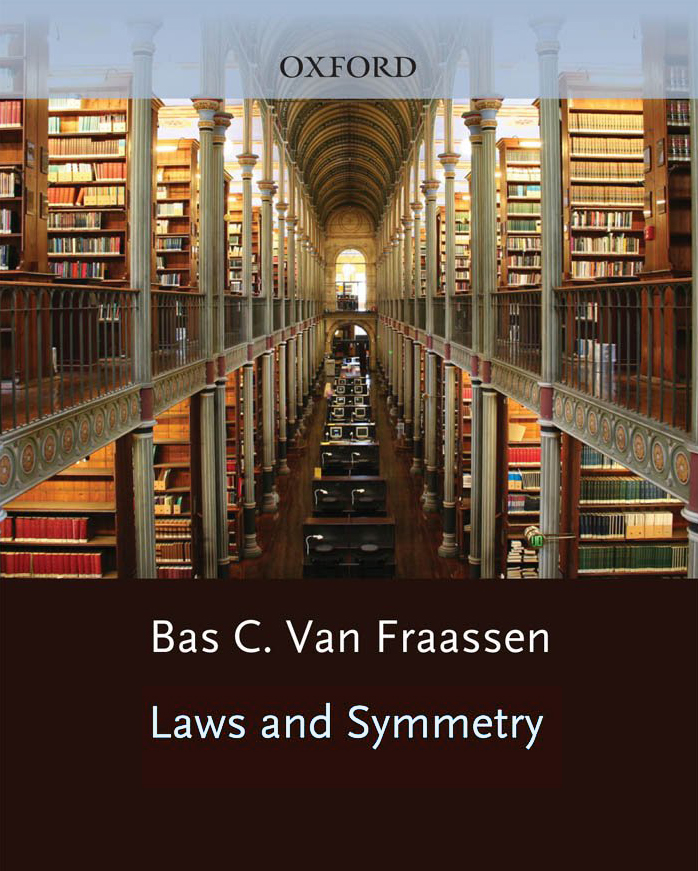Abstract
Laws and Symmetry has three main objectives. The first is to show the failure of philosophical accounts of laws of nature. The second is to undercut the epistemological principles at work in arguments for the reality of laws of nature. The third objective, nearest to my heart, is to be constructive as well, and to contribute to an epistemology and a philosophy of science antithetical to such metaphysical notions as laws of nature. Part One, in which the first objective is pursued, was the main subject of discussion in the symposium to follow. In this Synopsis, therefore, I shall concentrate on that.
In my view, as presented in Chapter 1, the concept of a law of nature is an anachronism, its proper life belonging to the 17th and 18th Centuries. Laws of nature played an important role in the philosophical-scientific thinking of Descartes and Newton, and functioned for them as a central clue to the structure of science. At the same time, two developments threatened the status of law. One was the empiricist critique of necessity and causality, notions closely allied to that of law. The other was that science was rapidly gaining autonomy not only from theology but from all of philosophy, and was exploiting concepts and methods foreign to metaphysics. Pre-eminent here is the birth of the symmetry argument. (Discussion of this subject is begun in Chapter 1 and continued in Chapters 10, 11 and 12.) Modern physics argues from symmetry and continuity -- not from universality or necessity, natural kinds or essences, contingency or accident. The concept of a law of nature is a vestigial concept in contemporary science.
Chapter 2 collects the cluster of criteria for what laws must be and do, which are honored in the literature to some degree or other. We can divide the criteria to be met by any philosophical account of laws roughly into major requirements and secondary ones. The major criteria concern what I call the problems of inference and identification. The accounts must show that there is a valid inference from what laws there are to what regularities there are in the world. The account must also identify the relevant aspects of the world that constitute or give rise to its laws, if any. Typically these two tasks lead to a dilemma. If laws of nature are identified in terms of some sort of necessity in nature which is simply postulated as fact, then there is no logical reason to think that the inference from lawlike necessity to actuality is valid. (Calling the postulated factor "necessity" or "necessitation" does not help.) If on the other hand the semantic account of law statements is so constructed that the inference in question is logically valid, then typically the truth-conditions of law statements involve something unidentifiable. Chapters 3, 4, and 5 argue that leading contemporary attempts (by David Lewis, David Armstrong, and a host of others) fail to slip between the horns of this dilemma. Nor do they meet secondary criteria, such as showing that what they make out to be laws of nature are the targets reached, or even aimed for, in scientific inquiry.
Both Quine and Rorty have, in their different ways, proclaimed the death of epistemology. I think they are right about mainstream traditional epistemology. There Induction has given way to Inference to the Best Explanation (IBE) in the epistemology hospitable to realism, or to metaphysics in general. In my view, developed in Part Two, neither Induction nor IBE qualifies as a rational strategy for change of opinion. To that extent at least I endorse some of Quine's and Rorty's conclusions. But it also seems to me that the underground river of probabilism, slowly growing in force over three centuries, has burst forth above ground in the twentieth century and brought new hope for epistemology. In Part Two I argue that with the end of foundationalism, probabilism provides the framework for a new epistemology, which is also adequate for philosophy of science.
The remainder of the book (Chapters 8-13) is devoted to contributions to the semantic approach in philosophy of science, to support my call to leave metaphysics behind. The semantic approach does not require an anti-realist or anti-metaphysical stance. In fact it is also followed by philosophers with very different philosophical positions from my own. But that is just the point: this collaboration in philosophy of science is possible because the approach is in itself neutral, and does not presuppose metaphysical views. I will leave the details aside, since the present symposium concentrates on Part One, which was meant to be the destructive prelude to this constructive effort in philosophy of science.
